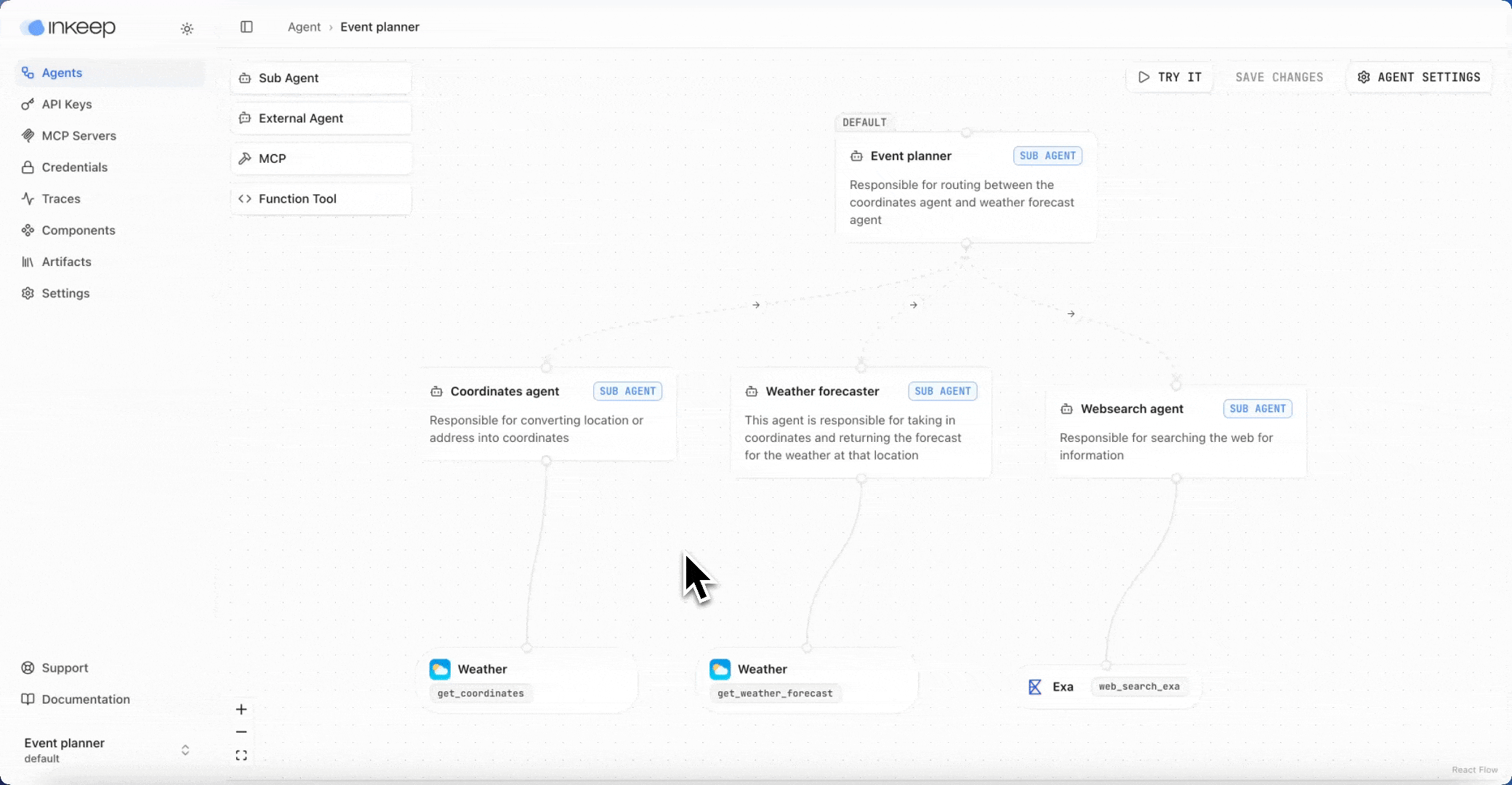The No-Code + Code Agent Builder
Copy page
Inkeep is a platform for building Agent Chat Assistants and AI Workflows.
With Inkeep, you can build AI Agents with a No-Code Visual Builder and Developer SDK. Agents can be edited in either with full 2-way sync, so technical and non-technical teams can create and manage their Agents in one platform.
Two ways to build
No-Code Visual Builder
A drag-and-drop canvas so any team can create and own the Agents they care about.

TypeScript Agents SDK
A code-first framework so engineering teams can build with the tools they expect.
The Visual Builder and TypeScript SDK are fully interoperable: your technical and non-technical teams can edit and manage Agents in either format and switch or collaborate with others at any time.
Use cases
Inkeep Agents can operate as Agentic AI Chat Assistants, for example:
- a customer experience agent for help centers, technical docs, or in-app experiences
- an internal copilot to assist your support, sales, marketing, ops, and other teams
Agents can also be used for Agentic Workflow Automation like:
- Creating and updating knowledge bases, documentation, and blogs
- Updating CRMs, triaging helpdesk tickets, and tackling repetitive tasks
Platform Overview
Inkeep Open Source includes:
- A Visual Builder & TypeScript SDK with 2-way sync
- Multi-agent architecture to support teams of agents
- MCP Tools with credentials management
- A UI component library for dynamic chat experiences
- Triggering Agents via MCP, A2A, & Vercel SDK APIs
- Observability via a Traces UI & OpenTelemetry
- Easy deployment to Vercel and using Docker
Interested in a managed platform? Sign up for the Inkeep Cloud waitlist or learn about Inkeep Enterprise. You can view a full feature comparison here.
Our Approach
Inkeep is designed to be extensible and open: you can use the LLM provider of your choice, use Agents via open protocols, and with a fair-code license and great devex, easily deploy and self-host Agents in your own infra.
Join our community to get support, stay up to date, and share feedback.